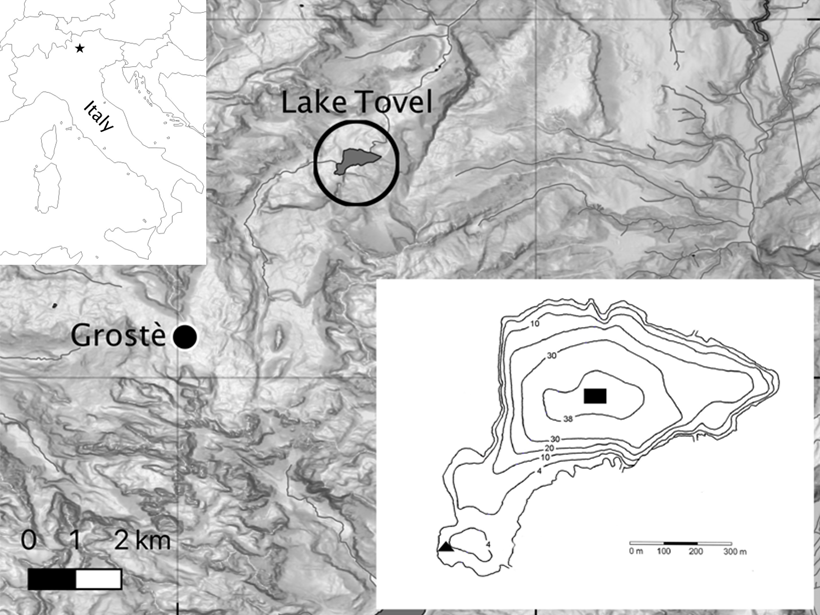Source: Water Resources Research
Many lakes, especially deep ones, have seasonal cycles with periods when they are either stratified (which means they have layers of water that do not mix) or they are unstratified (well-mixed). Mixing is important for the ecology of lakes, as it brings nutrients from deeper layers to shallow layers to support primary producers, increases oxygen levels throughout the lake, and generally moderates lake surface temperature. Some lakes never completely mix, and it is thought that with climate change more lakes will be poorly mixed and, by implication, less suitable for their aquatic ecology.
Flaim et al. [2020] examine long-term records of lake temperature, thermal stratification, and dissolved oxygen to demonstrate that their study system, Lake Tovel in northern Italy, has increasing deep water oxygen concentrations as it warms. Their finding runs counter to general expectation based on low altitude lakes, and essentially establishes theory that could be tested globally on high altitude lakes.
Citation: Flaim, G., Andreis, D., Piccolroaz, S., & Obertegger, U. [2020]. Ice cover and extreme events determine dissolved oxygen in a placid mountain lake. Water Resources Research, 56, e2020WR027321. https://doi.org/10.1029/2020WR027321
—D. Scott Mackay, Editor, Water Resources Research
Text © 2020. The authors. CC BY-NC-ND 3.0
Except where otherwise noted, images are subject to copyright. Any reuse without express permission from the copyright owner is prohibited.

